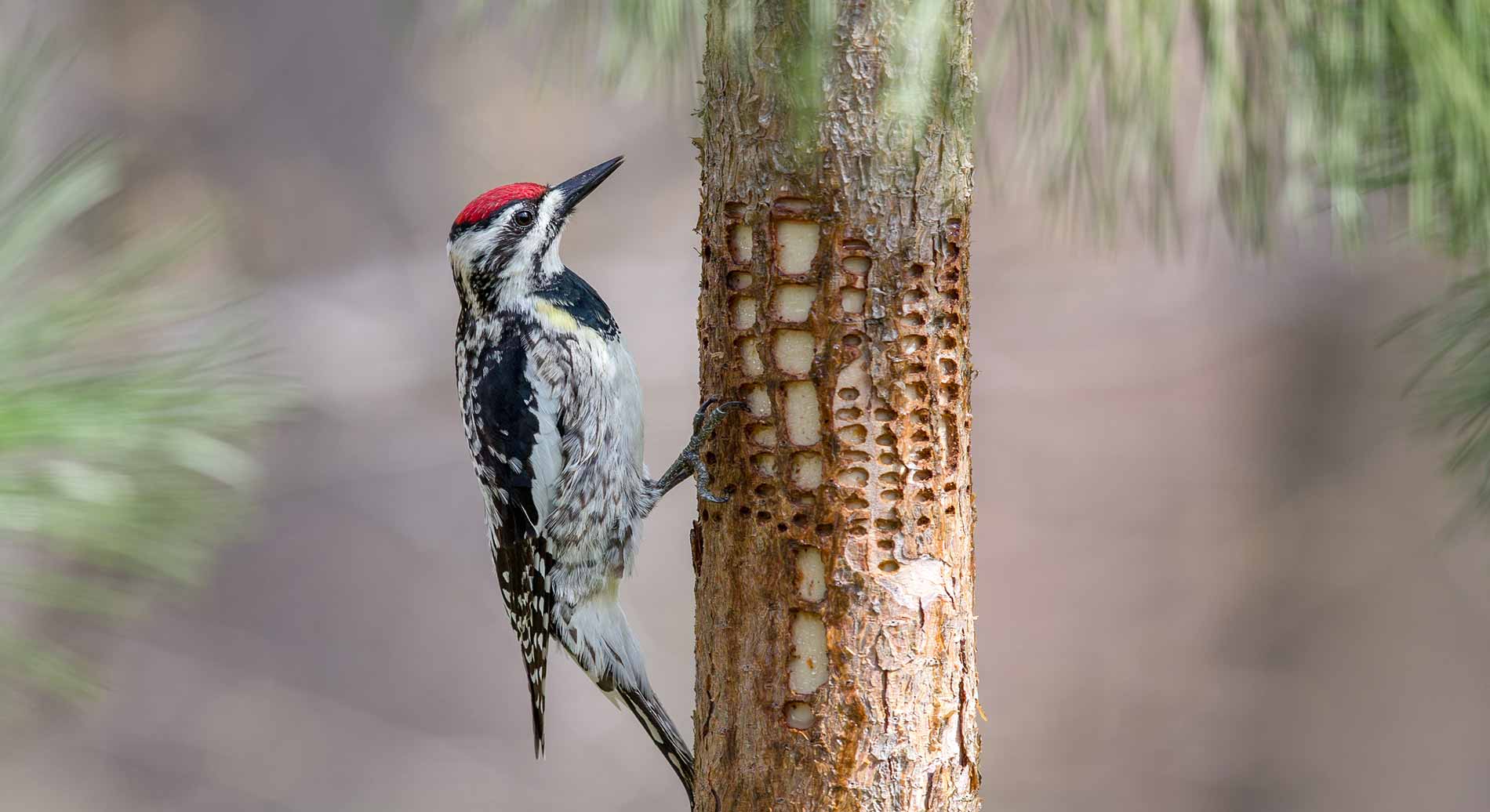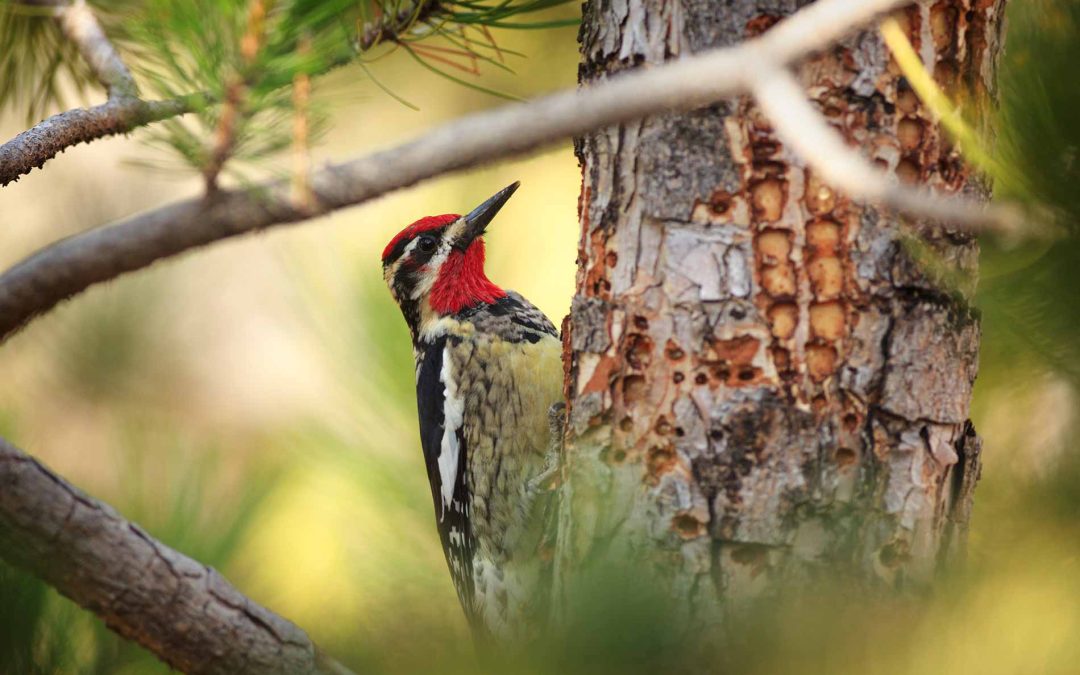Although sapsuckers drill holes in horizontal lines in tree bark, it’s unlikely they’ll hurt the tree over time, and in the meantime, you’ll have the opportunity to watch one of these birds up close. On rare occasions, sapsuckers will focus on a small tree and drill so many sap holes the tree will weaken. Branches girdled with several rows may be permanently damaged and tops of trees may be killed after several successive years of birds migrating back to the same food source. Another problem presents itself in that, once the integrity of the bark is compromised with that sharp beak, insects and disease can enter the wound on the tree trunk. We have three common migratory species in South BC – the Williamson’s, Red-breasted, and Yellow-Bellied Sapsucker.
What’s the difference between a sapsucker and a woodpecker?
Sapsuckers are a species of woodpecker. The main difference between these two birds comes not from their genus, but rather their eating habits. Woodpeckers frequent dying trees to hunt for insects and grubs burrowing under the bark. You’ll find random large holes where woodpeckers have drilled through in search for food, and they help control invasive pests that are destructive to trees and forest habitats. Woodpeckers also feed on nuts, seeds and suet. Sapsuckers drill small holes in horizontal lines through the bark to the cambium layer to feed on sap and phloem tissues. It’s easy to reason why sugar maples, aspen and birch trees are favourites. Interestingly, sapsuckers benefit migrating hummingbirds, as they feed on the sap from sapsucker wells as an early pre-bloom food source. It may well be due to sapsucker activity that hummingbirds, the darling of the birdwatcher world, manage to stay alive and not starve after long migrations. These two species, sapsuckers and hummingbirds, are very often found in the same forest habitats.
How do I protect my trees from sapsuckers?
Like most migratory birds, sapsuckers are legally protected under the Migratory Birds Convention Act and cannot be killed, captured, or its eggs destroyed. Since 50 percent of a sapsucker’s diet is composed of wild berries and fruits, placing a feeding platform to distract them can help mitigate bark damage. In urban settings, sapsuckers are also seen visiting suet and hummingbird feeders.
How can I treat sapsucker damage?
If you notice them frequenting a smaller vulnerable tree, wrap it in burlap to discourage tree-tapping activity. Spraying the holes with pruning paint prevents the entry of disease and invasive insects and reduces the sap from flowing. Before spraying, clean the holes of sap and debris, then cover the cleaned area. Most often birds are not a threat to your trees, and most of us feel privileged to protect and create urban habitats for wildlife when we can. If, however, you suspect more serious damage to your tree, call our team as soon as possible for an assessment and treatment. We can use our lift, or climb your tree with non-invasive methods to examine and treat the damage.

Call us at 778-362-3230 to book one of our tree experts for an on-site visit.
Visit us on Facebook to see our latest tree and landscaping projects.
For more information, visit our Tree & Landscaping Services page.
Locations & Service Areas
We are a team of certified arborists providing tree and professional landscaping services to the Thompson-Okanagan and Shuswap regions of BC. We offer an extensive list of arborist services throughout these regions and extend discounts to seniors and repeat customers. As a family-owned business, we care about the communities we serve throughout BC.
For Professional tree and landscaping services in Kamloops, call our main office at 1-888-778-3230 or 778-362-3230.
If you are looking for landscaping and tree services in Vernon or other North Okanagan locations, call 250-241-1704.
For tree care and landscaping in Kelowna, call 250-801-8405. For information on our fruit tree pruning and spraying services, see our Fruit Trees page.
Call Pine Valley Tree Service and Landscaping to talk with one of our dedicated tree specialists. We have over 40 years of experience serving the communities of southwest BC and work throughout the winter for hazardous tree removals, site preparations and utility arborist services.

